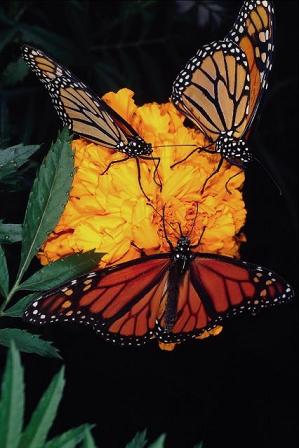| †
EpilogueMeteorologists trying to cope with vagaries of atmospheric convection have long noticed the mercurial nature of the Earthís climate. The overall structure of air convection is so sensitive to minuscule fluctuations and so efficient in propagating them that - figuratively speaking - a single flutter of butterfly wings somewhere in the lower Yucatan can cause dramatic changes in weather patterns over New York. A phenomenon known as the Butterfly Effect. The day after the Cardinals flew into the nest of wolves I was reading the World Series Game 1 report on Yahoo!News. Score tied at 9-9 at the bottom of the ninth and the fate of the all-important opener hung in the balance. The stakes could hardly have been higher. I was sucked into the narration, when my eyes fell upon the following passage: "Bellhorn hit a drive off the screen attached to Pesky's Pole in right field in the eighth inning, and the Boston Red Sox held on to take the highest-scoring opener in World Series history, beating the St. Louis Cardinals 11-9 on Saturday night." Knowing how much in baseball is driven by psychology I was struck by the pivotal role of this play. Of this moment at which reality decided to hop off the fence in a relentlessly simple way. Suddenly, in a numbing kiss of a hypodermic needle, the destiny chose its exit, never to return to the highway of possibilities. In this crackling moment the ball hung in perfect balance on top of the baseball cupola, waiting for the slightest cue to push it one way or another. But how much was really needed for its course to be completely different? Well, letís see. Highballs are quite sensitive to winds and with the tiniest change in their direction, the ball would have easily swerved into the foul territory. Now taking into account what we know about the "butterfly effect", it is entirely possible that that particular gust of wind that actually carried the ball to where it fell was caused by a small winged insect having frivolously decided to get tipsy somewhere in the lower Yucatan. And this one unruly butterfly, which just couldn't have waited few more minutes for its daily quarter-droplet of nectar, single-handedly determined the outcome of the World Series 2004. Dreadful thought, isnít it? But it is not as absurd as it seems. And if you think it through, the Cards weren't really that far away from the victory at all. All they had to do was to ground the butterfly traffic in the Northern Hemisphere, thereby obligating Lady Luck to take the next exit. This little stratagem would tip the scales in their favor, giving them the first game and releasing the grounded butterflies right into their foes' stomachs. Then they'd only have to wait patiently for the destiny to run its course and at the end it would have been the St Louis cleaners who would have been shampooing the red carpets. But nothing is ever lost forever. Next year there will be more wayward butterflies effecting little swirls and twirls, triggering chain reactions and setting unexpected winds into motion, thus opening new possibilities for electrifying outcomes. Their wings will foment new storms and the lightning of reality will once again choose its recondite conduit. With finicky sparkles sprinkling its path, the fate of the St Louis Cardinals will blaze alongside its track, like a night train hurtling through an endless library of dreams.
© 2005† Jan Rehacek † |
†
The Book of Cardinals 2004A pitcher weighing the distance. A deep breath seeping through batter's nostrils. The ball deftly harpooned. Short swing and... Bang! Up and away it goes. And while it is airborne and gainfully deployed, think how much separates a homer falling just behind the wall from a flyout caught just a few feet inches before it. Well, if you whip up some high school physics, you'll realize that - in scientific units - not much. A breadth of a hair. An extra whiff of a wind. A butterfly. Now take a look at some NFL stats. You can find easily teams with 0.8 or better winning percentage and worse than 0.2 losing percentage. In baseball, on the other hand, even best teams have trouble going over .65, and even the worst teams hardly ever drop below .35. What does that tell you? Well, in baseball the spread between the best and worst teams is smaller than in other sports, because whimsical flitters of butterfly wings hold much larger sway over its outcome. You think you might be betting on those Yankees against Royals, right? But watch out! You never know what's on tap in lower Yucatan. I can almost see bar butterflies, sitting around miniature Port Wine puddles and swapping tall baseball stories of stolen homers and fouled up fairballs. And how they helped the Royals sweep the Yankees. The equalizing force of randomness can be brutal. The more appreciation I have for those brave men who can consistently beat the little buzzards and give the game some integrity and coherence. Because, frankly, who would like to watch a lottery draw?
|




